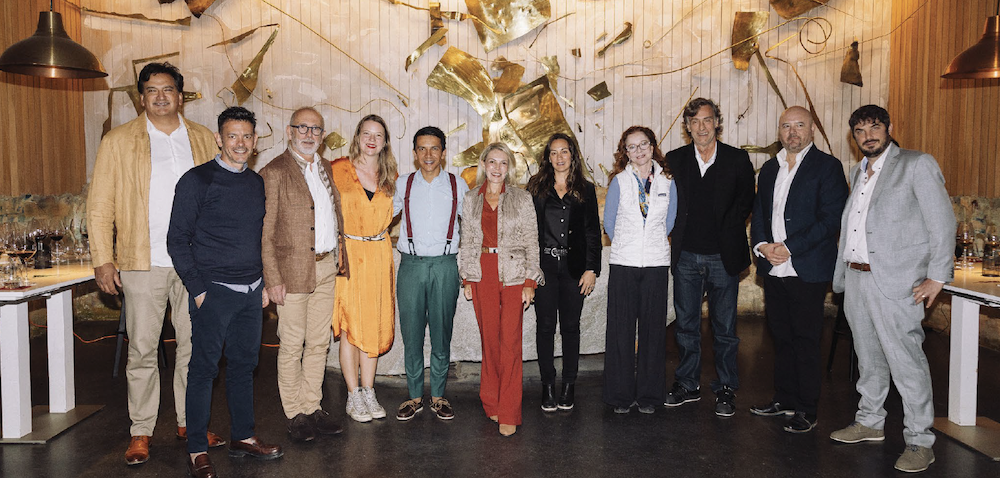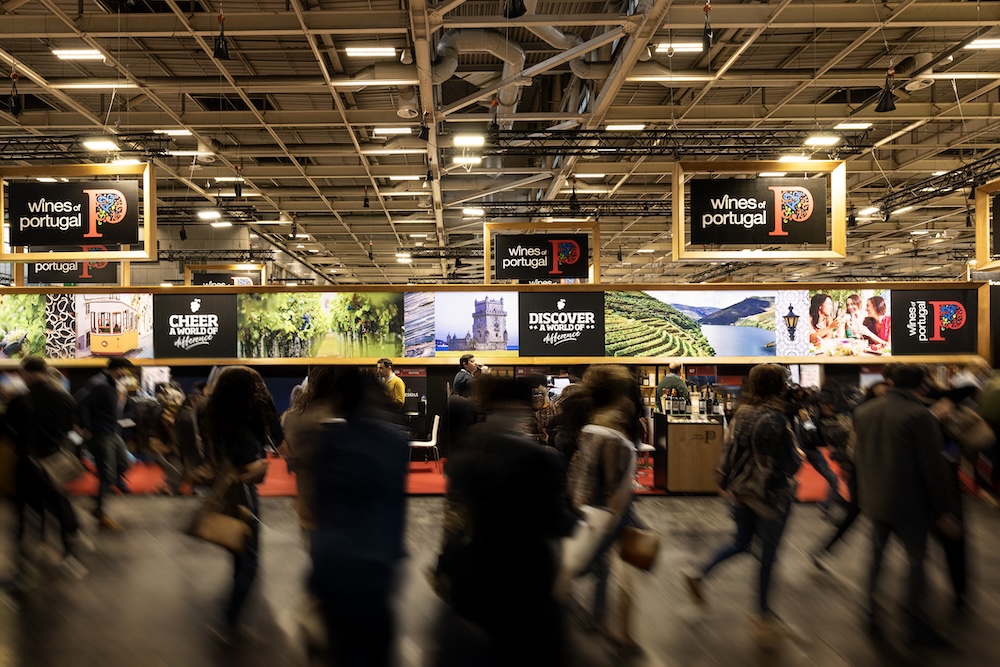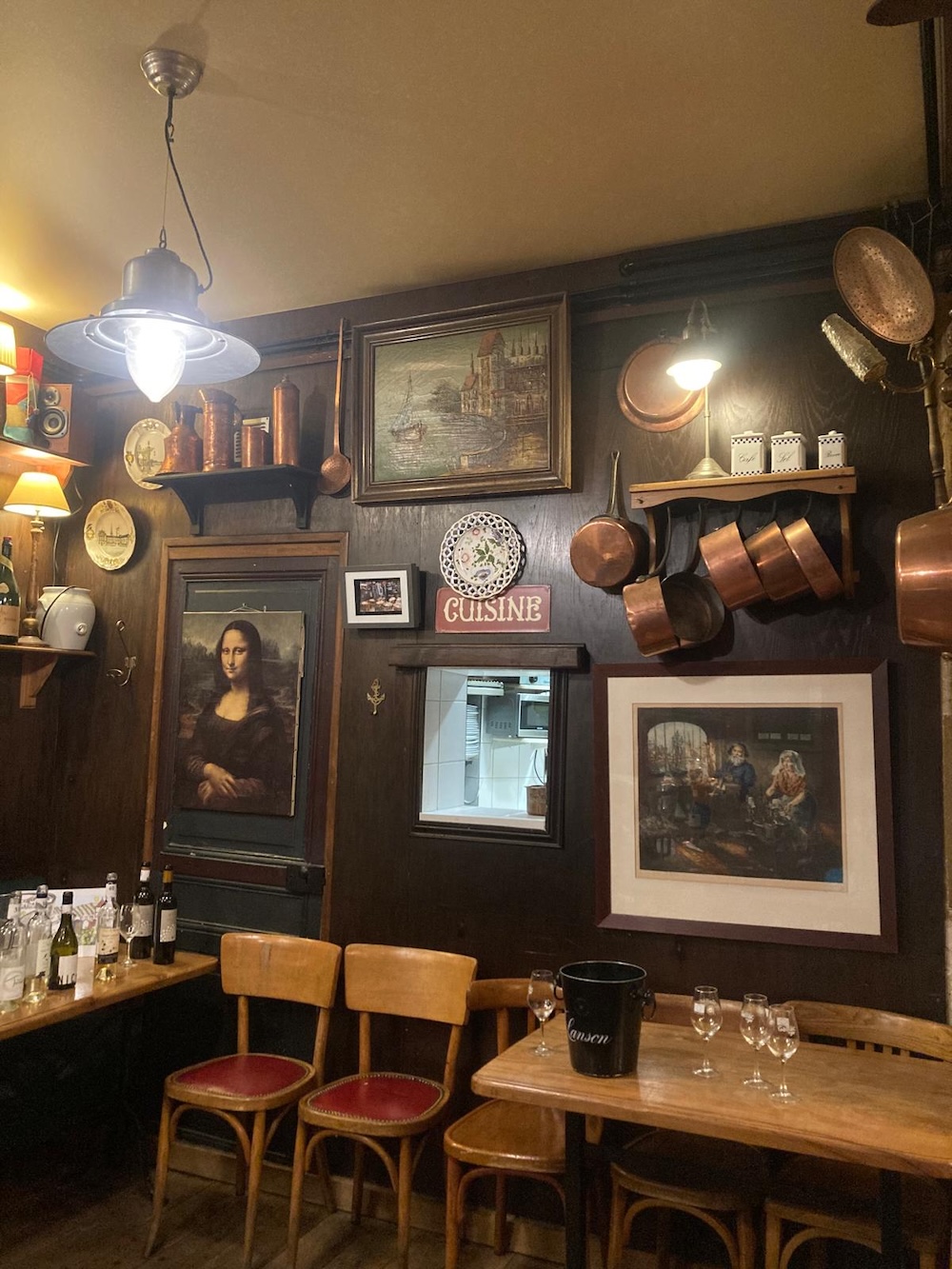
Discovery

Discovery
By Camille Bernard – Photographs: courtesy of the estates, posted on 08 January 2024
The Médoc boasts a long-standing history of producing wine and has garnered an international reputation as the home of some of Bordeaux’s most prestigious appellations. Whilst the Médoc appellation is the area’s most extensive, it also keeps the lowest profile. This belies the work by its winegrowers to offer a unique interpretation of its grape varieties and to deliver extremely charming wines that deserve to be better known.
The Médoc, quite rightly, evokes the top names of the Bordeaux wine industry. But take a closer look and you discover unsuspected nuances, defining features and a treasure trove to be delved into. One of the reasons for this is that it covers an extensive footprint, sweeping across more than 16,000 hectares, from the Jalle de Blanquefort river on the outskirts of Bordeaux, to the shores of the Atlantic, on the tip of the Grave area. Across this expanse, the vineyards of the Médoc are home to both the prestigious properties which have contributed significantly to its global reputation, as well as small producers, the custodians of a centuries-old winegrowing heritage. The Médoc appellation is a perfect illustration of this, as the location of myriad small wineries which form a consolidated yet incredibly varied identity. Admittedly, if you apply the law that sets the boundaries of the appellation area, the entire Médoc wine region is eligible for AOC Médoc status.
In practice, however, the vast majority of wines labelled Médoc are produced in the northern part of the peninsula, with the southern part occupied by AOC Haut-Médoc which rings the six village-designated appellations that are Margaux, Pauillac, Saint-Julien, Saint-Estèphe, Moulis-en-Médoc and Listrac-Médoc.
What makes this specific area unique is that the spread of vineyards occurred at a later date than across the rest of the peninsula. There’s a good reason for that – it stems from the enterprising transformation of marshland by the Dutch who, in the 17th century, decided to drain the land to grow grapes there.
The present-day Médoc appellation area is defined by its incredible concentration of small wineries which produce very charming red wines that not only appeal for their flavour, but also the excellent value for money they offer.
In the currently challenging economic climate, however, how is the appellation coping, overshadowed as it is sometimes by its illustrious neighbours despite the fact that it ticks all the boxes for consumers? To find out, we spoke to some of the appellation’s major producers.

Stemming from the merger of the wineries in Bégadan, Ordonnac, Prignac and Queyrac, the Uni-Médoc group of co-operatives now stands as a linchpin of the Médoc appellation. Martin Cougnaud, its head of marketing, speaks of the group of 140 winegrowing families with undisguised pride: “With 1,000 hectares under vine, our co-operative accounts for 19% of AOC Médoc, which makes us the leading producer in the appellation”.
At its facilities in Gaillan, which house its offices, winery and shop, the entire team works hard to enhance and promote the work of its co-operative winegrowers.

In the privacy of the Médoc’s largest barrel cellar is where very different styles of wine are matured, “in a bid to offer an extensive range embracing every style of red wine”.
This source of pride however belies a very real concern. Alexis Danglade, Uni-Médoc’s sales manager for France, comments on the challenges encountered by the appellation: “Bordeaux’s reputation has suffered and we are suffering from this poor image. Even our Crus Bourgeois struggle to secure shelf space in wine merchants, despite their quality”. This has not put a dent in the enthusiasm of the winegrowers at Uni-Médoc, though, who are redoubling their efforts to remain focused on their priorities and do everything in their power to continue to reign over their appellation by ensuring a presence along the Médoc coast”, stresses Danglade.
Driven by their belief in the need to supply easy-drinking wines, Les Vignerons d’Uni-Médoc launched Simply Médoc in 2020. The brand features two red wines which retain the typicity of Médoc whilst being more accessible. The fruit-forward offerings also display novel, minimalist labels so that they can stand out in a crowded marketplace.
So far, all of these levers have enabled the winery to be well received on a very local scale and to post a slight but encouraging increase in sales.
Concurrently with this, as pioneers of sustainability – with the first schemes launched in 1993 – Cougnaud proudly stresses that “97% of vineyards grown by Uni-Médoc winegrowers are certified HVE 3”. He adds, “The location of the vineyards, between the estuary and the ocean, creates a milder micro-climate that safeguards them from extreme heat”.

Uni-Médoc combines pride, adaptability and a commitment to the environment and demonstrates that, despite the current headwinds, unity and perseverance are still reliable values in the wine industry.

Founded in 1949, Producta Vignobles is now a key player in the Bordeaux wine market. It boasts a solid reputation in the region, and as a company with co-operative shareholders, it has become a choice partner for the wine industry where it plays a pivotal role.
Its expertise spans from purchasing to logistics and marketing and it has a firm rooting in the vineyards of Bordeaux. But what sets it apart is its mission. As the company’s marketing and communications manager, Stéphanie Monteau points out, “Producta Vignobles is the bridge between the winegrower and the consumer”.

Under the skilful management of Camille Dujardin, who has been its managing director since 2020, Producta Vignobles continues to combine tradition and modernity. The CSR policy rolled out in the company is anything but a simple sales gimmick: “It reflects the inherent spirit within the company and the 18 co-operative wineries in the group, which go from the Médoc to Monbazillac”.
The Médoc itself offers the perfect illustration of the diversification strategy implemented by the company. Monteau explains: “Of all the appellations in the region, AOC Médoc is considered by consumers as a recognised, flagship appellation”. As a testament to this, “despite a general decline in consumption of red wines, the appellation continues to appeal”.
Producta Vignobles has not just gone with the flow, it has shaped trends. By launching the CodeM label, produced by one of its esteemed shareholding wineries at Uni-Médoc, the company supplies “fruity, oak-free wines aimed at people looking for accessible wines”.

Meanwhile, “the Merrain Rouge label [Ed. also produced by Vignerons d'Uni-Médoc] epitomises the strength and authenticity of AOC Médoc, where oak ageing lends the wine the powerful structure specific to traditional Médoc”.
Such differently styled wines illustrate Producta Vignoble’s ability to adapt. As Dujardin points out, “The expertise of the winegrowers and technical staff coupled with the range of vineyard sites and grape varieties available allow us to supply modern, offbeat brands whilst also ensuring impeccable quality”.
Producta Vignobles demonstrates, with passion, expertise and receptiveness, that it is possible to respond to changing consumer tastes whilst at the same time honouring a rich winegrowing tradition.
At his farm located in the Queyrac area, Richard Barraud, the owner of Château Carménère, explores avenues of innovation and entrepreneurship. After racking up a number of different experiences in a variety of wineries, a personal challenge led him to buy his own small farm in 2005. Fuelled by a desire to produce Médoc red wines, he admits that he rapidly became aware of the challenges of competing with the Médoc’s Grands Crus. “Initially, I only had two hectares of typical Médoc grape varieties. We really started off with a blank canvas”, he recalls.

But what really sets Château Carménère apart is its quest for originality and creativeness, which defines the estate’s spirit. Barraud has embraced the challenge of reincorporating the Carmenere grape variety, which used to be widely grown in the region but fell out of favour due to its susceptibility to shatter. In fact, he admits, “It is a fragile grape variety that has caused us a lot of issues: 98% of the flowers succumbed to shatter and we had extremely low yields”. Despite these hurdles, Barraud remains determined, charmed by the unusual nuances of Carmenere and its ability to produce wines that are light yet structured.
His resilience has paid off, producing a range of wines which has broken with Médoc traditions. In 2018, he even launched a single varietal Carmenere called Audace and every year, he scales up the proportion of the variety in his blended wines. In doing so, he is able to decrease the percentage of Merlot, which he considers to be less resistant to excessive heat.

Barraud admits that the challenge now lies in introducing the variety to customers more accustomed to its Chilean and Argentinean iterations. Nevertheless, the undeniable uniqueness of his wines resonates with his private customers, but also with overseas markets where his wines have now attracted a following in Switzerland, Germany and even Norway.
Ultimately, although he points the finger at Bordeaux’s inability to fully promote its wines and appellations, Barraud still has faith in his policy of differentiation: “Working directly with my customers allows me to engage with them and find out whether they like our wines. That contact strengthens the trust we place in our determination to focus on the distinctiveness of this grape variety which, also, seems to be a varietal of the future faced with global warming”, he concludes optimistically.

Jean Guyon has had a number of different professions and is not your average winegrower. “I have always had a passion for wine, one that was passed down to me by my father”, he concedes. This attraction to the ‘nectar of the gods’ led him to set himself a daring challenge, that of owning his own vineyard in the Médoc. “I started off with 2 hectares in the 1990s with a single-minded goal which was to make a fine wine”, he recounts. The real challenge, however, was not so much to produce the wine as to establish a reputation for it. “Terroir is crucial, as is the quality of the wine, but making a name for yourself is the hardest part”. He rapidly realised that he needed to extend his acreage to establish a reputation and gradually acquired several properties, increasing the total area under vine at Domaines Rollan de By to 185 hectares.

Among the range of AOC Médoc wines that begin life in these vineyard sites, he proudly mentions Château Condissas, which made a name for itself by outperforming a Cru Classé at an official tasting.
Driven by his own success, Guyon is fairly critical about the Médoc, a region he describes as “one big hotchpotch where the best rub shoulders with the worst. It is an outstanding region that has neglected its own development”. He feels that the key to success lies, and will continue to lie in the future, in his capacity to stand out from the crowd.
Despite the growing reputation of Domaines Rollan de By, Guyon has noticed that a challenging economy is adding pressure and that marketing remains a colossal challenge. The irony is that the Médoc appellation, despite covering a sprawling area, struggles to turn up the volume and attract attention. Guyon highlights the striking contrast between Burgundy’s young, laid back image and Bordeaux’s stuffy image, underscoring the need to revamp its image by “making our wines joyful”.

Despite everything, Guyon remains an optimist, and stays true to his initial philosophy of “making good wine for every table”. His wines are now sold both in France and abroad, particularly in the United States where the Château Greysac label is the best-selling French wine. Aware of the challenges caused by climate change and the need to rein in rising alcohol levels, he has adapted his vineyard management techniques and is even considering partially de-alcoholising his wines to respond to new consumer tastes. This innovative tack mirrors Jean Guyon’s unique career.

In Bégadan, very near the Gironde estuary, Château Vieux Robin encapsulates five generations of a passionate family of winegrowers. What makes its twenty or so hectares under vine unique is that “the soils are clay-limestone, clay-gravel and clay-silica”, explains its lucky owner, Maryse Roba.

“For over twenty years, we have been farming our vines sustainably. Our determination to protect the environment can be seen in the biodiversity that is widespread across our vineyards”, says Roba.
The winery’s pledge to the environment only enhances its heritage, but this is not the only vineyard where wines produce by the Roba family excel. In 2011, Roba also bought Domaine des Anguilleys, previously owned by her parents. Here, the terroir is dramatically different, and produces more accessible Médoc wines with silkier tannins, thereby broadening the range of flavours on offer, and meeting the needs of a wider audience.

Despite this ability to supply wines in very different styles, Roba stresses the challenges facing the Médoc appellation: “It is essential to win back local customers. Some consumers feel that the tannins in Médoc wines are too harsh, which is why we pay great attention to detail in the vineyards, particularly before the harvest, when we taste the grapes until the pips taste like hazelnuts and the skins are nicely supple. This allows us to have very elegant juice and avoid astringent tannins”.

Also, in a bid to constantly aim for quality and elegance, the winery favours very gentle extraction and maturation in barrels with short toasts so that the fruit can express itself.
Although the majority of the wines produced by the two wineries is bound for export markets (70%), Roba’s goal is clear: “People need to rediscover this magnificent peninsula that is the Médoc”. She knows that one of the appellation’s calling cards is its tourist appeal and concludes optimistically, “The future for the Médoc seems bright”.
In the Médoc’s extensive winegrowing landscape, tradition and prestige are often presented as the pivotal aspects of the stories we are all familiar with. And yet, the testimonials shared by independent producers and co-operative wineries in the namesake appellation tell a different story, revealing a modern facet to this long-standing wine region. In an AOC that struggles both to emerge from the shadows of its prestigious neighbours and garner a reputation for the wines it produces, the wines themselves epitomise innovation, resilience and differentiation. Admittedly, each producer follows their own strategy, but all of them illustrate the importance of embracing change and reinventing themselves. For some, this entails re-introducing an heirloom grape variety, for others creating a brand aimed at making a name for themselves and appealing to new consumers. But they all stress that passion, determination and adaptation are the essential ingredients for standing out from the crowd. Ultimately, their stories highlight the potential for innovation that exists even in the most traditional wine regions, stressing that the future of the Médoc, just like its past, will be written by enterprising pioneers.

Discovery

Discovery

Discovery